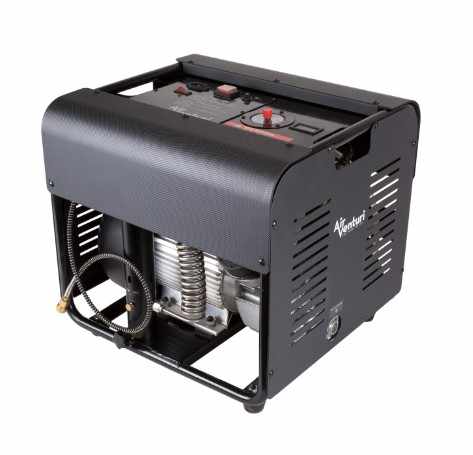
Whether you're setting up a workshop, powering pneumatic tools, or just need a reliable device to inflate tires, compressors are essential tools for various tasks. Air compressors cover the basics so you can make an informed purchase.
What Is an Air Compressor?
A compressor is a machine that converts power into potential energy stored in pressurized air. This stored air can then be used for multiple applications—from driving air tools and spray painting to industrial automation and inflating pool toys. Their versatility makes them indispensable in both professional and DIY environments.
How Do Air Compressors Work?
The core principle behind compressors is simple: they pull in outside air, compress it using a piston or rotary system, and store it in a tank. When the pressure reaches a set limit, the motor shuts off. The pressurized air is then released through a hose or nozzle when needed.
Different models operate through various mechanisms, including:
Reciprocating (Piston) Compressors: Use a piston driven by a crankshaft to compress air.
Rotary Screw Compressors: Use twin screws to compress air continuously—ideal for heavy-duty use.
Scroll Compressors: Use two spiral elements and are common in HVAC systems for their quiet operation.
Types of Air Compressors
Understanding the types of compressors helps determine which model suits your requirements. Here are the most common categories:
1. Portable
Compact and easy to move, portable models are perfect for homeowners, small workshops, or on-the-go mechanics. They often feature smaller tanks and lower horsepower, making them ideal for inflating tires, airbrushing, or light-duty tasks.
2. Stationary
These are larger and designed for permanent installation. Equipped with bigger tanks and more powerful motors, they’re suitable for garages or job sites where a consistent air supply is required for tools like nail guns, sanders, or grinders. For more info, click here
3. Single-Stage vs. Two-Stage Compressors
Single-stage compressors compress air in one stroke and are suitable for tasks requiring less than 150 PSI.
Two-stage compressors compress air in two stages and can deliver up to 200 PSI, ideal for more demanding applications.
4. Oil-Free vs. Oil-Lubricated
Oil-free compressors require less maintenance and are great for indoor use where cleanliness matters.
Oil-lubricated compressors last longer but need regular oil changes and maintenance.
Key Specifications to Know
Before purchasing a compressor, pay attention to the following technical specs:
CFM (Cubic Feet per Minute): Indicates how much air the compressor can deliver. Higher CFM is necessary for running larger tools or multiple tools at once.
PSI (Pounds per Square Inch): Measures air pressure output. Most home tools require 90 PSI, but industrial uses may demand more.
Tank Size: Larger tanks hold more air, reducing the motor’s need to kick on frequently. Choose based on your application duration and frequency.
Horsepower (HP): Higher horsepower generally means more power to compress air quickly. However, efficiency and design can also affect performance.
Duty Cycle: Refers to how long the compressor can run before needing a break. A 100% duty cycle means continuous operation.
Common Uses of Air Compressors
From casual home improvement tasks to intensive industrial jobs, these devices can handle a range of uses:
Automotive repair: Powering impact wrenches, ratchets, and spray guns.
Home DIY: Nail guns, painting, tire inflation, and cleaning.
Construction: Drilling, jackhammers, and sandblasting.
HVAC and refrigeration: Compressors play a vital role in air conditioning units.
Farming: Used to power water pumps, pneumatic tools, and milking machines.
Tips for Choosing the Right Compressor
Define Your Purpose: Are you doing light DIY tasks or heavy-duty professional work? This helps narrow down specs like tank size and CFM.
Consider Portability: If you move your equipment often, go for a portable, lightweight model with wheels.
Check Power Source Compatibility: Ensure you have the correct power source (110V for light-duty or 220V for industrial models).
Noise Level: Some compressors can be loud. Look for quiet or sound-insulated models if you're working indoors or in noise-sensitive areas.
Plan for Maintenance: Know what type of upkeep your chosen model requires. Oil-lubricated compressors need more attention than oil-free ones.
Safety and Storage
Always operate your compressor with caution. Make sure it’s placed on a flat, stable surface. Check hoses and connections regularly for leaks. Store it in a dry, clean area to prevent rust and extend its lifespan. For stationary models, proper ventilation is key to avoiding overheating.
Summary
An air compressor is a versatile investment that can enhance productivity in countless projects. From inflating tires to powering industrial tools, the right choice will depend on how and where you plan to use it. With a clear understanding of the basics—including types, specifications, and features—you’ll be equipped to find a model that performs reliably for years to come.


Write a comment ...